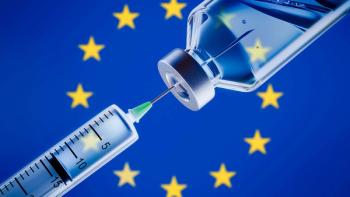
- Pharmaceutical Technology May 2025
- Volume 49
- Issue 4
- Pages: 30–31
Authentic Intelligence: Finding Diverse Talent in the Age of AI
Key Takeaways
- The bio/pharmaceutical industry is adapting to trends like skill specialization, regulatory complexities, remote work, AI, and talent retention, reshaping outsourcing practices.
- The COVID-19 pandemic's impact persists, affecting work environments and capital access, with a focus on diversity, equity, and inclusion for innovation.
The pandemic made it daunting for companies to retain talent and then find it anew, but just as that cloud is lifting and workforce diversity is being embraced, AI beckons as a new challenge.
A January 2025 report from Vector, a United Kingdom-based recruitment process outsourcing (RPO) partner for pharmaceutical contract development and manufacturing organizations (CDMOs) and contract research organizations (CROs), defined five main trends to watch for regarding outsourcing within the bio/pharmaceutical industry itself (1). Skill specialization, regulatory complexities, the perpetuance of remote and hybrid work,
At least one of these factors—a continued reduction in in-office work—is a stubbornly lingering aftereffect of the COVID-19 pandemic. Erik Wiklund, CEO of Circio, called it the “COVID bubble,” a “nuclear winter” of sorts for smaller biotech companies that made capital difficult to access and caused massive layoffs in the United States and Europe (2).
However, Wiklund sees the winds of change shifting for Circio, and believes the experiences his company has been through in the past five years mirror those of countless industry peers.
A long road back, but widening
“Many companies launch great ambitions, large valuations,” Wiklund explained (2). “People flow into the industry, and then the breaks set in, but then what happens is that the companies that survive, they then suddenly have access to a broad talent pool, and then the capital comes back.”
Central to that broadening of talent, opined Sheryl Johnson, pharma application development manager at Orbia Fluor & Energy Materials, should be endeavoring to continue the strides the industry has made toward diversity, equity, and inclusion—keeping in mind that the pharmaceutical world encompasses far more than the US, where those buzzwords have come under political scrutiny (3).
Johnson says Orbia is taking a variety of proactive approaches to improve gender-diverse representations within their workforce, but full diversity will take ongoing cooperation throughout the field.
“Women, in particular, can bring unique perspectives, talents, [and] approaches that can drive innovation, particularly in the pharma industry,” Johnson said (3). “Female leaders can often excel in collaborative and inclusive leadership styles, which I feel can help foster creativity and new ideas. I find women are very open to sharing of new ideas and provide supportive attitude to research management and development through considered and empathetic communication.”
STEM careers start with STEM in schools
As part of its coverage of both the International Day of Women and Girls in Science on February 11 and International Women’s Day on March 8, Pharmaceutical Technology® conducted a series of interviews with leading women in the bio/pharma space, Johnson included, explaining some reasons for a gender gap in science, technology, engineering, and math (STEM) that has skewed the balance of skilled workers heavily to the male side, and offering potential ways the industry can foster and incentivize female involvement (4).
While Sabine Gölden, eLearning & Training Lead at the European consulting firm MAIN5, said educational STEM programs aim to provide equal access to all without being gender-specific, she added that persistent stereotypes of what are traditionally seen as gendered career paths should be understood by females at a young age—especially when programs exist that challenge them to break out of those norms (5).
“Scientific research shows that there are cognitive differences and varying talents between men and women,” Gölden said (5). “As a result, some individuals may naturally have advantages in this or that topic or might suit better in a specific position. These talents follow a Gaussian (‘normal’) distribution, and men are more likely to have cognitive advantages for STEM-related work—but women are still underrepresented in these fields.”
Yet to return to another of the Vector report’s key points, talent retention remains a major hurdle. And it may not always be, as in Wiklund’s “COVID bubble” example, the sole burden of the industry, or any specific company.
Gölden said the “work-motherhood challenge” is still one that women are fighting, even within themselves, across various workforces (5). She calls it a “leaky pipeline,” one that may have an unconventional fix.
“Even today, it’s still uncommon for women to be the primary breadwinners and men to take on the role of caretakers,” she said (5). “From my perspective, this is where the biggest challenge lies. It’s not just about providing opportunities and empowerment for women; it’s about breaking down the barriers for men, who often face potential career and reputation impacts when they take on caretaker roles."
‘Artificial’ talent not yet a threat
The reputations of human workers of all backgrounds could figure to be at stake in the next several years as AI impacts more corners of the industry. Wiklund is in lockstep with the Vector report in theorizing that AI’s most likely usefulness in the near term will be in the earliest stages of the R&D process, such as drug development (1,2). But as far as human decision-making, Wiklund believes the technology’s intrusion is still a long way off.
“Maybe the area which appears most obvious is in diagnostics and prognostics, where an artificial intelligence can start utilizing information and colliding information in a more systematic way, using radiology and other types of scans to give better and more reliable interpretations,” he said (2). “That probably is where artificial intelligence will make an impact first. But again, the business models are not really established yet. The regulatory frameworks are not there yet. So ... I think it’s going to take longer than 2025 for us to start really seeing [the] big impact of this when it comes to therapeutic development, or the real impact on treatment decisions.”
Doing the best to keep a step ahead of
“By increasing representation in STEM fields, these initiatives help drive diversity in leadership and innovation in pharma and biotech,” Redmond said (4). “Additionally, mentorship, networking, and industry partnerships further support women in transitioning from education to impactful careers.”
Changing on a dime, or dollar
As the US rewrites its tariff policies early in the second Trump Administration, companies in Europe and other parts of the world may look elsewhere for development opportunities, according to Wiklund. So even as access to talent is improving five years post-COVID, where people are looking for new work, and which companies will partner with them, and each other, remain question marks.
“Increasing cost levels in the US in particular, [a] strong dollar, and increasing inflation [have] driven up prices,” Wiklund explained, also adding that “it’s become cheaper by comparison to develop drugs in Europe, Asia, [and] Australia, and I think maybe if that trend continues with a strong US economy and increasing prices, then you may see that that kind of European, eastward-oriented trend continuing” (2).
Will the geopolitical climate, artificial intelligence, gender imbalances, or the flexibility of working environments prove to be headwinds or tailwinds for finding, developing, and retaining talent? Finding a definitive answer that fits any of those factors is neither easy nor certain. Skilled workers are out there to be had, but how bio/pharmaceutical companies treat them and encourage their career growth is a destination to which there are many different paths.
References
1. Kelly, N. The Future of Pharma Outsourcing: Trends Reshaping the Talent Landscape in 2025. VectorTA.com, Jan. 23, 2025.
2. Thomas, F. and Haigney, S. Industry Outlook 2025: Talent Up for Grabs. PharmTech.com, April 10, 2025.
3. Thomas, F. International Women’s Day 2025: A Promising Future for Gender Diversity in Pharma. PharmTech.com, March 8, 2025.
4. Haigney, S. Leaving STEM Skills on the Table. PharmTech.com, Feb. 13, 2025.
5. Haigney, S. International Day of Women and Girls in Science 2025: Inspiring and Supporting Women in STEM. PharmTech.com, Feb. 17, 2025.
About the author
Patrick Lavery is an Editor for Pharmaceutical Technology®.
Article details
Pharmaceutical Technology®
Vol. 49, No. 4
May 2025
Pages: 30–31
Citation
When referring to this article, please cite it as Lavery, P. Authentic Intelligence: Finding Diverse Talent in the Age of AI. Pharmaceutical Technology 2025 49 (4).
Articles in this issue
8 months ago
Poor API Quality Threatens a Healthy Supply8 months ago
Complying with European versus US GMPsNewsletter
Get the essential updates shaping the future of pharma manufacturing and compliance—subscribe today to Pharmaceutical Technology and never miss a breakthrough.




